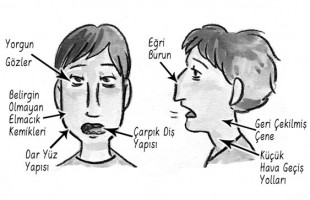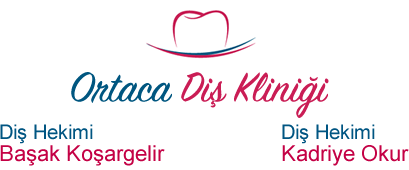 With varying balances in mouth breathing, the tongue position changes, the maxilla narrows, the posterior teeth are extended and the lower jaw reverses, leading to an open front. In the open front closure treatment, fixed or interfaced appliances may be used.
The majority of all newborn babies and animals do nasal breathing. Dogs sometimes breathe through their mouths to adjust their body temperature, at other times their mouths are closed.
Time-consuming foods, over-eating, lack of exercise, and high temperatures in the interior cause transition to mouth breathing. From the age of two years, stress, anger and tension enter the child's life and all of this affects the breath.
Oral breathing leads to problems such as asthma, rhinitis, hay fever, nasal congestion, sleep disorders, hyperactivity, learning disabilities, changes in the tooth and head-face structure. Oral breathing also leads to an increase in the stress level.
Abilir Children who have mouth breathing cannot sleep well, which can lead to fatigue in the day and cause concentration problems in school life. Behavioral disorders are likely to occur in the child who cannot be successful in school life. Most of these children are mistakenly diagnosed with attention deficit hyperactivity disorder. Yosh Jefferson
Asthma and Allergic Rhinitis
Your child with the Buteyko Method:
It goes to nose breathing.
Stubborn asthma and cough breaks down.
Safely reduces the need for medication.
Easily opens your nose with a simple exercise.
It breathes correctly and learns to take precautions against the factors that trigger its disease.
Hyperactivity and Stress
Your child with the Buteyko Method:
It goes to nose breathing.
Sleep regularly.
Corrects behavior and relationship disorders.
A self-confident individual.
Improves learning skills.
It becomes productive and creative.
Improves concentration in educational life.
Changes in Head-Face Structure and Impaired Teeth Formation
Children who learn how to breathe correctly before they are eight years of age often resolve without the need for orthodontic treatment. Since the development of the lower jaw continues until the age of eighteen, significant improvement is achieved until this age.
In addition, the success rate of orthodontic treatment increases in the presence of correct breathing and swallowing.
Abnormal Head-Face Development:
Healthy Head-Face Development:
Related Articles:
Oral Oral Respiration Increases Lifelong Sleep Apnea Risk
Related Videos:
Dr. John Mew on Dispatches - Part 1
Dr John Mew on Dispatches - Part 2
References:
1) Mc Keown P, Buteyko Meets Dr Mew, Galway, Buteyko Clinic.com, 2010.
2) Mc Keown P, Presentation of Craniofacial Changes. |


